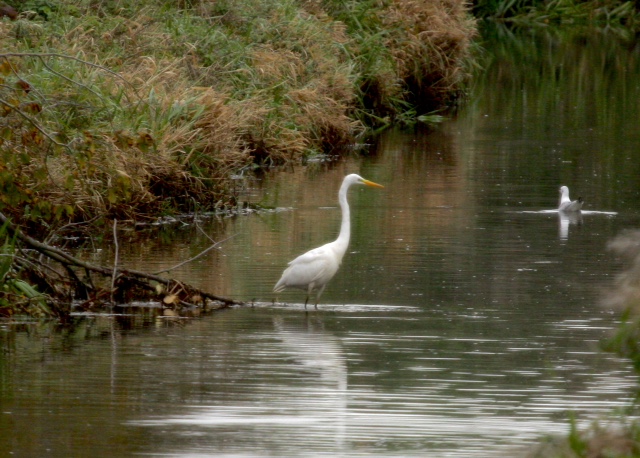Ravens are occasionally seen east of the Pennines and will hopefully go the way of buzzards in future years.
Putting an appearance in Watton also since the 7th of November has been a spotted redshank amongst up to 10 common. It was still on at the weekend and is perhaps the longest staying since the D res was drained back in 2007. Other winter waders have included green sandpiper and dunlin. We attribute this to the cattle from Easingwold grazing the reserve for the first time; they've made a real difference and taken the vegetation right down and opened the habitat up a lot. The curlew and wildfowl clearly seem a lot more comfortable feeding around the seasonal ponds - presumably as the open vistas mean this character is more visible - Brian Colley:
Brian also captured these images of whoopers dropping in. A lot have been in the county recently and we've been attracting groups of up to 13 since the 7th also:
There was a big movement of pink footed geese last week with 100 birds on the Watton pits and stragglers in and amongst the greylags. 4 pintail were also present recently - a drake by Brian here too:
Thanks to Francis Bell too for these images of the first goosanders of the year on the 16th:
A scaup was present on the 11th. Another nice seasonal delight was a short eared owl on the 19th on Watton. We really ought to get a stake out at Hempholme pump house and see if their active over Standingholme or Hallytreeholme as in the vintage 2011. Siskins are generally reliable enough around the alders of the lagoons but the several lesser redpoll amongst them are always nice to liven things up. Kingfishers are still on the North Marsh for those patient - Christine Watts:
Neil Murray:
And a festive Robin:
Otherwise our notorious gull botherer has returned from warmer climes and as such the species and numbers have multiplied rapidly. Whilst present virtually every night Med gulls reached an all time high of 6 birds on the 18th, and yellow legs are near nightly. Whilst the northerlies did not yield us a white winger of little auk we have had two consecutive Caspian gulls on the last two nights - a belting make this evening. No doubt the details to follow on Martin's site here. Otherwise a big build up of goldeneye recently:Whilst we may be in the depths of winter there are still young about. It would appear from Steve Hine's pictures and reports we can celebrate the recent birth of three otter cubs on the reserve - photographed on North Marsh last week:
We also caught a water vole (unharmed) in our mink traps today - so good to know these are still on the go after the recent capture of 3 American Mink. And good news too was that one of our long term volunteers Dave Ware recently picked up 'Student of the Year' at his graduation from Bishop Burton recently - a great accolade and recognition of a lot of hard work put in both in study and helping on the reserve:


































